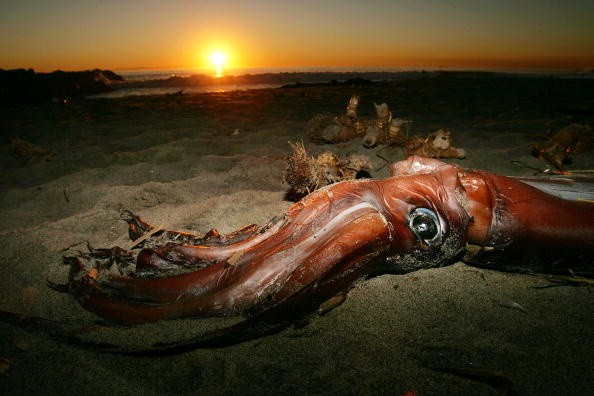According to a new study led by experts at the American Museum of Natural History and Yale, the earliest progenitors of the animal group that includes octopuses and vampire squids that did not have eight, but ten arms.
The study, which defines a new species of vampyropod based on a previously unknown 328-million-year-old fossil, pushes back the group's age by about 82 million years.
The findings were published in the journal Nature Communications today.
The remains of the vampire squid discovered

The animal's fossilized bones were discovered in what is now Montana in 1988, but it was only recently that it was identified as a new species of vampyropod.
Previously, this group of soft-bodied cephalopods was thought to have eight limbs, but the new species has ten, as per Dailymail.
According to Dr. Christopher Whalen, a postdoctoral researcher in the Museum's Division of Paleontology and a National Science Foundation postdoctoral fellow in Yale's Department of Earth & Planetary Sciences, this is the first and only known vampyropod with ten functioning appendages.
The researchers discovered that the animal had 10 arms with suckers and dated back 328 million years 82 million years older than the previous oldest record.
Vampyropoda is not widely recorded in the fossil record due to its lack of hard structures.
According to ScienceDaily, the new research is based on an extremely well-preserved vampyropod fossil from the Royal Ontario Museum's holdings (ROM).
Whalen and coauthor Neil Landman, a curator emeritus in the Museum's Division of Paleontology, identified the fossil specimen as a completely new genus and species dating to approximately 328 million years ago, making it the oldest known vampyropod and extending the fossil record of the group by approximately 82 million years.
The new research also describes its ten arms, all of which had retained suckers, validating prior scientific assertions that the common ancestor of vampyropods had ten arms as well.
The number of arms distinguishes the 10-armed squid and cuttlefish line (Decabrachia) from the eight-armed octopus and vampire squid line (Vampyropoda).
They've known for a long time that octopuses get their eight arms by removing the two filaments of the vampire squid and that these filaments are vestigial limbs, said Whalen.
However, all previously recorded fossil vampyropods with preserved appendages had just eight arms, hence this specimen is perhaps the first proof of the hypothesis that all cephalopods had 10 limbs in the past.
The species name has been named to Joe Biden
Two of the cephalopod's limbs appear to be extended in comparison to the other eight arms, and its torpedo-shaped body is reminiscent of modern squids.
The fossil was given the name Syllipsimopodi bideni.
The genus name is derived from the Greek words "syllpsimos" for "prehensile" and "pódi" for "foot" since this is the oldest known cephalopod to acquire suckers, allowing the arms, which are adaptations of the molluscan foot, to better grab prey and other items.
The species name was chosen to honor the 46th President of the United States, Joseph R. Biden, who was recently inaugurated when the paper was published.
The researchers anticipate that their results will contribute to a better understanding of cephalopod evolution.
Syllipsimopodi bideni contradicts the prevalent arguments for vampyropod origins and provides an alternative paradigm for the development of internally-shelled cephalopods, said Dr Whalen.
The researchers hope the findings will help to improve our understanding of the evolution of cephalopods
"Syllipsimopodi bideni challenges the predominant arguments for vampyropod origins and offers a new model for the evolution of internally-shelled cephalopods," Dr Whalen concluded.
© 2026 NatureWorldNews.com All rights reserved. Do not reproduce without permission.





